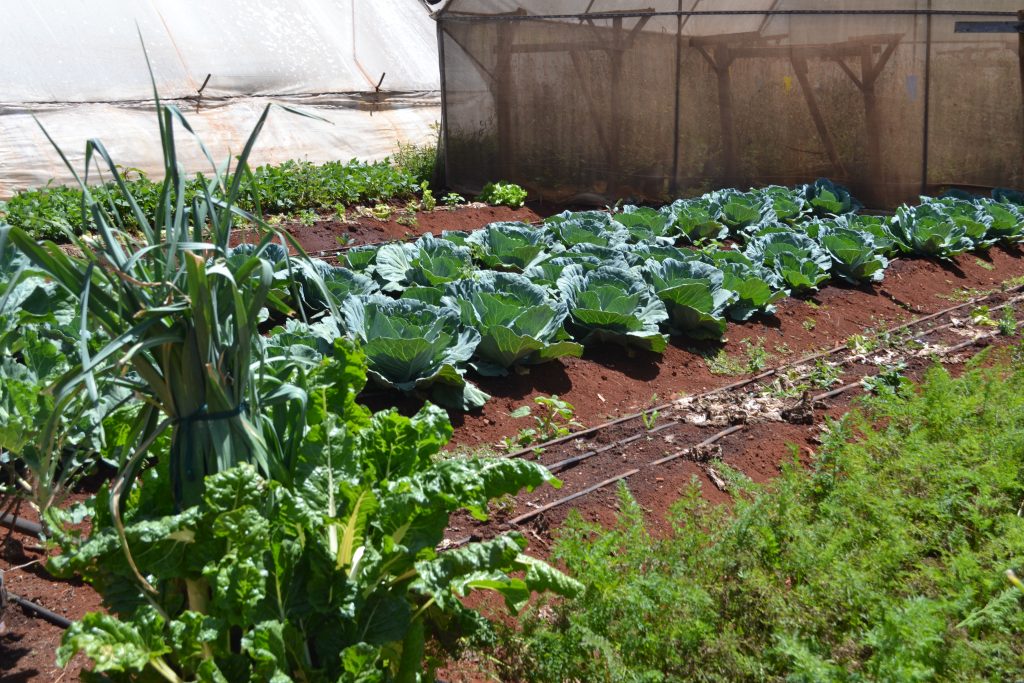It’s in the Bag
by Phyllis Byrd, mission co-worker serving with the Organization of Africa Instituted Churches (OAIC) in Kenya.
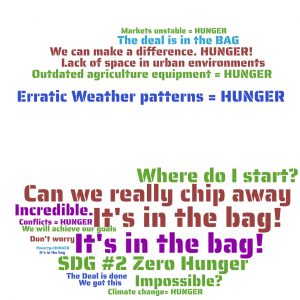
Growing up, I heard the idiom “It’s in the bag” and started using this idiom throughout my life. “Phyllis, you have a test tomorrow. Are you prepared?” “It’s in the bag.” “How did the job interview go?” “It’s in the bag.” This was another way of saying, “Don’t worry, I will achieve my goal. I am certain of succeeding. It’s as good as secured. I’ve got this.” It’s in the bag might be easy to say if one is assured that you are prepared for an exam, or a job interview went so well that the interviewer said the job is yours.
It is a risky and audacious claim to make when it comes to large social issues such as hunger alleviation. Can we say with certainty that “it’s in the bag?” Absolutely! Why?
Undernourishment in sub-Saharan Africa in 2019 was approximately 234.7 million people. This number increases to 605 million if you include both those who are severely and moderately food insecure. 58.6 percent of the population in sub-Saharan Africa is food insecure. We have experienced an increase in food insecurity in the urban settings across the continent because of urban migration. The changing environment from an agrarian society to agglomeration into the cities promises a better life; yet, we see an increase in poverty, food insecurity, and diseases because of poor nutrition. Another repercussion of urbanization is that people living in congested areas, which have become densely populated communities. Large families live in a 12×12 room. The World Bank says that 60 percent of Kenyans live in densely populated informal settlements in urban settings. Within these informal settlements, you find many of the AIC (African Independent Churches) with which I work. The lack of space in the urban communities has caused the Organization of African Instituted Churches to think of ways to work with the AIC’s to develop strategies to combat hunger and malnourishment in the urban settings. The OAIC can say with all certainty, “It’s in the bag.”
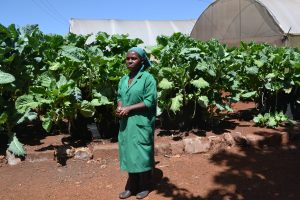
Farming in vertical bags is a way of growing vegetables in the urban setting or where land is scarce. Farming in a bag is one way we can work with communities to mitigate hunger in urban settings. I was introduced to this method of farming by Professor Teresia Hinga, who shared with me the exciting, innovative techniques used by “RealIPM.” RealIPM makes the bags used to plant vegetables. The bags last for ten years and can hold up to 100 plants. They use only organic products to grow their vegetables, and they require very little water. RealIPM trains small-scale farmers and urban dwellers on growing vegetables in a bag. These bags come in a variety of sizes and take very little space and water. Growing produce in a bag can be easily done in the urban setting. I visited the RealIPM farm with my daughter and photographer. I was convinced I “discovered the Garden of Eden” in Kenya in a town called Thika. The lushness of acres upon acres of farmland dedicated to a multiplicity of farming techniques, from planting in the earth, greenhouses, and farming in a bag. Every part of the farm enhances another: the chicken fertilizer is used to grow the arrowroots: the worm bins produce liquid fertilizer for the plants; the cow dung is used as biogas to cook lunch for the workers and is also used as a natural fertilizer.
The “Garden of Eden” (RealIPM) staff lunch is planned to introduce staff to a variety of foods that are grown on the farm. Each month, the nurse holds a meeting with staff to talk about food and nutrition. This is also done before new foods are introduced into the worker’s diet. The nurse discusses the health benefits of the new food and what cooking methods will most benefit the body. The staff eats a balanced lunch which is grown on the farm. Members of staff are also allowed to take home vegetables grown on the farm to feed their families. This has greatly improved the health of workers on the farm, as well as their families. I spoke to one of the workers. She told me of all the foods she would have never considered eating. However, after being introduced to them on the farm and understanding their nutritional value, she incorporated them into her family’s diet. She also shared these new food ideas and their nutritional value with her community. This has had a positive impact on the community’s health and well-being.
Growing carrots, spinach, greens, onions, beetroots, cassava, cabbage, etc., in a bag is possible in the over-populated urban setting. It is one way the OAIC will introduce this method to many of our churches located in densely populated areas. Our plan is not only to introduce the technology of growing produce in a bag but also to work with health care professionals in the community to teach the nutritional value of a variety of vegetables.
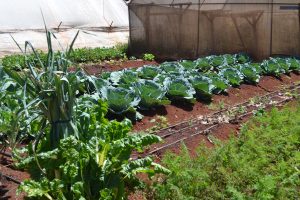
Ending hunger is a moral and economic imperative. As people of faith, we are called to work to eradicate hunger. The OAIC is committed to working with partners to combat malnourishment and the rising food insecurity in Africa. We can say “it’s in the bag” with confidence as we join hands with advocacy groups, policymakers, and research organizations to introduce and implement practical ideas like bag farming as a way of ending hunger, achieving food security, improving nutrition, and promoting sustainable agriculture in communities across Africa.
While visiting the farm at RealIPM and observing the connectivity of all of creation, I could not help reflecting on biblical teachings. The RealIPM runs well because everything lends/shares itself with the other to assure each component thrives. The starting point of the RealIPM is not innovative farming technology or good management. The starting point of the farm is the fact that it is approximately 70 km away from the top of the Aberdare mountains. This is a chain of elevated volcanic mountains located in Central Kenya. The moisture-laden air surrounding the mountains released rain. When it rained, the rocks on the mountain broke down over time and enriched the soil. This caused a healthy, thick forest and vegetation to grow, contributing to the moisture, which condensed into rain. As the rain weathered stones, strengthening the richness of the soil, both traveled down the mountain and enriched the rivers. The rivers, enhanced by the Aberdare Mountains, flow into Thika and, over time, built up the rich red soil which farmers use to grow their crops.
The Aberdare mountains gave of its bounty to the rivers, and the rain also contributed to the health of the natural environment. This produced the right conditions for the earth to bear organic produce, contributing to the health of the workers, their families, and the community. Each plant, animal, insect, worm, and microorganism all work to strengthen each other. The success of all of these enables the RealIPM to share its knowledge with others. Everything was transformed so that it can be shared and enhance something else. I wonder if this is the transformation Paul was referring to in Ephesians 4:
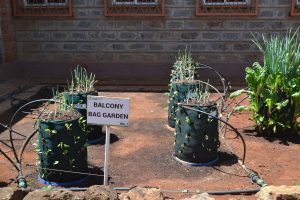
“And to put on the new self, created to be like God in true righteousness and holiness.”
As people of faith, we are called to an inward transformation, which leads to mindfulness that we are one part of a whole, and our small routine actions contribute to the sustaining of life and harmony with all of God’s creation. This is what gives the church the confidence to declare with assurance, zero hunger is possible! “It’s in the bag.”
Phyllis Byrd serves with the Organization of Africa Instituted Churches (OAIC) in Kenya. Her appointment is made possible by gifts to Disciples Mission Fund, Our Church’s Wider Mission, and your special gifts.

